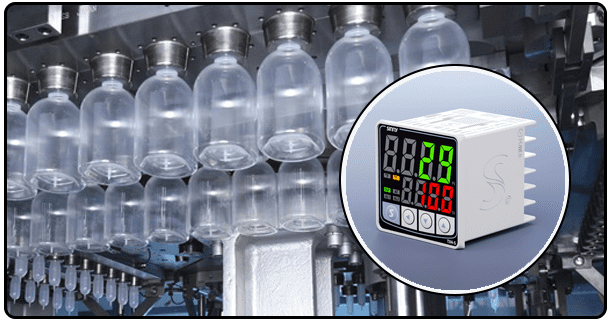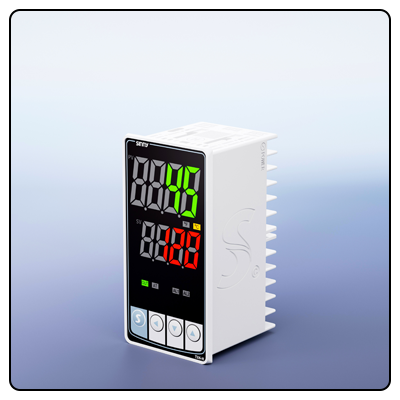What Are Common Problems With Digital Temperature Controllers?
"Easily navigate the complexity of digital temperature controllers with our comprehensive guide that pinpoints common problems while offering troubleshooting strategies that promote optimal temperature management."
1. Common Issues and Solutions Concerning Digital Temperature Controllers
Digital temperature controllers are integral parts of many industrial, commercial, and residential systems for precise environmental regulation. Unfortunately, as is true of all technologies, they may also encounter issues; being familiar with them and their possible causes is key for maintaining operational efficiency and avoiding downtime. In this article we'll investigate some of the most frequent digital temperature controller problems while offering troubleshooting tips to keep them running smoothly.
Power Issues
One of the first areas to examine when troubleshooting temperature controller issues is power source issues. Controllers that don't power on may be experiencing interruptions or outages; make sure it is connected properly, with functioning power outlets; check for any broken fuses or circuit breakers; consider investing in an uninterruptible power supply (UPS) which provides extra backup protection during surges and outages.
2. Sensor-Related Issues
Temperature sensors serve as the eyes and ears of temperature controllers, and any issues with them could result in incorrect temperature readings and system malfunction. Common sensor-related issues include mismatch between input type and sensor type used; interference from power lines; physical damage or physical wear on sensor itself. To troubleshoot sensor issues effectively, verify if you have used the correct type for input with controller specifications; inspect wiring connections for damage/noise; replace any damaged sensors if any are identified as potential sources.
3. Temperature Reading Inaccuracies
Accurate temperature readings may result from calibration drift, where sensor accuracy degrades over time. Regular calibration against an established standard can resolve this issue; additionally ensure that sensors are correctly installed with sufficient contact with surfaces being monitored; shielding devices against electromagnetic interference and electrical noise may further help to increase accuracy.
4. Control Method Malfunctions
Digital temperature controllers typically employ PID control algorithms to maintain temperatures, yet incorrectly setting these parameters could result in overshooting or undershooting desired temps. If using on/off control instead, ensure the hysteresis or differential settings match those required by your application; consult either its manual or specialist regarding optimization of these settings.
5. Display and Interface Errors
Controllers that display error messages or are difficult to navigate could indicate interface problems. Error codes can often be deciphered using your manual and point towards where the problem exists; otherwise resetting to factory settings might help - though be sure to back up any important configurations first!
6. Temperature Regulation Issues
A controller that struggles to maintain the set temperature could have regulation problems. These could stem from improper control settings, malfunctioning heating or cooling elements or sensors or compromised sensors; so review these elements, inspect any damage they might incur, and ensure their sensor is working effectively before concluding your search for solutions.
Mechanical Failures
Over time, physical components in temperature controllers such as buttons, switches or internal components may deteriorate over time and wear. Routine inspection and maintenance should help minimize such wear-and-tear. If one component proves faulty, contact its manufacturer for replacement parts or upgrade your device for more reliable performance.
Software and Firmware Glitches
Software or firmware issues can cause controllers to become nonresponsive and act erratically, often necessitating updating firmware to the latest version. Following manufacturer instructions when updating is often successful in solving such problems; otherwise it could create further complications and may increase damage risk.
Environmental Factors
Extreme temperatures, dust, moisture or chemical exposure can negatively impact controller performance. To maximize effectiveness of installation in terms of environmental specifications laid out by its manufacturer and to shield devices from harsh environments. Protective enclosures offer invaluable shielding.
7. User Error
Many issues associated with temperature controllers stem from user error. Improper programming, misinterpretations of readings or failure to follow manufacturer's instructions may all contribute. Be familiar with your controller's operation before beginning use; consult its manual or professional for any guidance if any aspect is unclear or uncertain.
This article has discussed various common issues with digital temperature controllers and offered troubleshooting tips to address them. Being aware of such problems will allow you to keep your temperature control systems functioning effectively and reliably.
- How Does A Digital Temperature Controller Differ From An Analog One?
- What Are Applications Of Digital Temperature Controllers?























